










































































































































The report into the 2017 manchester Arena terrorist bomb attack has been highly critical of the emergency services. Sir John Saunders, chairman of the enquiry into the attack, concluded that lives which could have been saved were lost as a result of the “inadequacies” of the response.
We remember the night well. A suicide bomber murdered 22 people and injured more than 60 as they left the Ariana Grande concert at the MEN Arena. As the grim events unfolded, we became aware via social media that while the emergency services may have been struggling, one service was more than rising to the challenges presented.
One service that should receive nothing but praise for the work it did on that night was the taxi and private hire industry. Many fans had travelled to the MEN Arena by cab, and were expecting to be picked up after the concert. With chaos reigning, public transport suspended and roads closed, the drivers’ jobs became immensely more difficult.
Yet they rose to the challenge. Drivers and operators from as far afield as Liverpool and Newcastle-upon-Tyne offered free transport to make sure terrified concertgoers were safely picked up and taken home. Many drivers and operators, including black cabs and Uber, turned off their meters and offered free rides to get people to safety.
And drivers showed their resourcefulness, parking up and walking to the venue in order to find their stranded customers – many of them young women and childrenand escort them out of danger and back to the car.
Leading Manchester operator Street Cars immediately asked all drivers to turn their meters off and pick up as many people in need of rides home or to the hospital as possible.
Director Sameer Arshad said: “This is our city, at the end of the day. Money’s not everything, do you know what I mean?”
Many drivers travelled from Liverpool to assist. One Alpha Taxis driver safely picked up the daughters of Liverpool mayor Steve Rotheram in the aftermath of the
attack. The driver abandoned his car and walked into Manchester to find the girls, aged 19 and 21, who were waiting in a hotel. “I am forever grateful for that show of kindness,” said Rotheram.
We were determined that the efforts of the operators and drivers should not go unrecognised. At the 2017 Professional Driver QSi Awards, we awarded a special, honorary QSi Gold Award to all the north-western drivers and operators who helped out on that tragic night.
The award was proudly accepted by Street Cars to a standing ovation, and emotions ran high that night. In presenting the award, I told the audience: “You became Manchester’s fourth emergency service, and we’re so proud of you.”
That hasn’t changed. This industry has been through the mill over the past two years. Having survived the Covid-19 pandemic, operators have had to face new challenges: Rising costs; driver shortages; inadequate supplies of new cars; and inflexible, nit-picking local authorities that on balance do more to hinder than help.
And yet we’re here again for the QSi Awards at the Celtic Manor on November 29, once again rewarding the best of the best in the industry’s national awards event.
While we haven’t faced a single challenge so taxing as the MEN Arena bombing, the level of difficulties operators have had to face on a day-to-day basis in 2022 has been arguably just as stressful.
You can hear how operators and drivers overcame those challenges on the night. There are still tickets available, and we guarantee the best party in the business!
To reserve your place, and be a part of the QSi Awards, please visit our website: https://www.prodrivermags.com/qsi-awards-home/ buy-tickets/
And turn to page 12 to find the amazing companies and drivers that have made the shortlist. Good luck to everyone!
Mark Bursa Editormarkbursa@prodrivermags.com
Manchester’s largest taxi operator StreetCars has made two more acquisitions in the city with the purchase of long-standing Chorlton operator Goodwins Olympic, a company whose roots stretch back 45 years, and Stretford taxi firm New Moon.
The deals are StreetCars’ second and third this year in Manchester, following the takeover of Scotts Taxis, based in Sale, earlier this year.
StreetCars managing director Aqeel Arshad said: “Goodwins Olympic, based in Chorlton-CumHardy, has now joined our fleet, adding over 100 cars overnight. We’ve also branched a bit further out, acquiring New Moon as well, a pedigreed Stretford base with another 100 cars.”
He continued: “We’ve merged these bases into one, based out of Goodwins cosy offices in Chorlton. We’ve effectively doubled our capability to service our customers and we’re looking to triple our outreach. These bases will be run
by StreetCars and will keep their current titles.”
The deals adds around 200 cars to the StreetCars’ fleet, joining around 90 added with Scotts, taking StreetCars combined fleet close to 1.000 vehicles. Arshad said the two companies would continue to use their existing trading names as these were strong in their local areas. All drivers and staff are
Southampton-based taxi operator Cab My Ride has made its second acquisition of 2022, buying local competitor Millers Taxi for a six-figure sum.
Millers Taxi is a well-known operator in the Eastleigh, Fareham and Winchester area, running a fleet of 70 vehicles. The company offering a highquality service, including local and airport transfers, but was left in a vulnerable position due to the Covid-19 pandemic, said Cab My Ride director Arjan Sahota.
Arashad said there was room for growth with the acquired businesses as their pre-Covid fleets had been much larger – Goodwins Olympic had more than 300 drivers and Scotts had around 230.


The new acquisitions takes StreetCars’ total fleet to more than 900 cars, including 100 at Stansted Airport, around 150 at Manchester Airport and around 400 StreetCars vehicles in Manchester city centre.
being retained, though Goodwins Olympic owner Raffi Mohammed is not staying with the business.
“We don’t want to lose the local brands, and the pricing of these companies is a bit cheaper than Street Cars,” Arshad said. However, there will be some revised branding and both companies will run on Autocab software –Goodwins Olympic was previously on iCabbi’s dispatch system.
Arshad added that he wanted to switch the entire fleet – including 350 StreetCars-owned vehicles –to electric by 2025, but at present a lack of infrastructure was stopping that. At Stansted, new conventionally-engined Skoda cars have been acquired.
Arshad played down a recent dispute with the GMB Union over commission rates at Stansted, where StreetCars took over the official contract earlier in the year. “We’re paying the same rates as the previous operator had been paying for nine years,” he said. We hold regular monthly meetings with the drivers and they’re happy with what we’re doing.”
In particular, the Millers deal adds 13 MPVs to the Cab My Ride fleet, something which is rare to get in the city at the moment, said Sahota.
Millers’ former owner Timothy Miller said: “I am excited to retire and relax from the industry. All the team are excited to move over and open the business to new opportunities”
Following the acquisition, the Eastleigh operations will benefit from the expertise of a bigger team, with more resources and capital to invest in technology, customer service and the number of cars.
“Cab My Ride has successfully acquired the service and has integrated it into our platform,” Sahota said. The deal takes Cab My Ride’s fleet to more than 300. In January 2022 it bought another Hampshire operator, Bitterne Cars.
Cab My Ride provides on-demand transport services to customers across the South of England and now can extend this offering to customers in rural areas where typically it would be difficult to get a taxi.
Cab My Ride has retained all current staff at Millers and is looking to expand its team by five members of staff, which will allow it to develop its clear vision as an innovative new player within the marketplace.
Sahota said: “There’s an exciting time coming for Cab My Ride, as we continue to expand our business throughout the South Coast. This acquisition allows us to open up to a new market and grow our ability to serve thousands of customers with reliable transport.”
 Mark Bursa
Mark Bursa
Uber has agreed to pay HMRC £615 million to settle an investigation into unpaid VAT. The payment will resolve all outstanding UK VAT claims against the company Uber had previously argued it was exempt from VAT as its drivers were classified as selfemployed. But following landmark court rulings that its drivers were “workers” with rights, Uber has been charging 20% VAT to all journeys since March.
Earlier estimates had put Uber’s potential VAT bill at more than £2 billion, but the settlement was reached following discussions with HMRC.
In a statement, HMRC said: “This is a good result for the UK

Uber has added further operators to its Local Cab network across the UK.
Local Cab is now live with a further 10 operators, including giant Oxford operator Royal Cars. Royal Cars joins rivals 001 Taxis and Her Ride as Local Cab providers – Oxford is one of the cities where Uber has experienced very high demand for cabs without offering its own service.
Other newcomers include:
u Value Cars, Basildon
u Metro Cars, Harlow
u PJ Cars, Derby
u Brian’s Taxis, Rushden
u Bens Private Hire, Keighley
u Crossley’s Cars, Halifax
u Associated Taxis, Bishop’s Stortford
Meanwhile another new operator has been added in Bradford, where passengers can now book trips
with 247 Cars, alongside Eccleshill Premier Taxis, Wrose Village Cars and Zip.
Obaid Raza, Director at 247 Cars, said: “Demand for taxi services in Bradford has grown considerably in recent months, so it’s great to be able to give passengers more options to get from A to B.”
Uber has also rolled out Local Cab in Bath, which gives passengers the option to book trips with a local taxi operator via the Uber app. Uber already operates its own service in Bath, but customers will now be able to choose a car operated by local firm Swoop instead of an Uber-operated car.
David Scaramanga, owner of Swoop, said: “Local Cab provides another way for customers to book with
The news comes as Uber reported a 26% rise in gross bookings to £25.4 billion in the quarter from July to September compared with the same period in 2021. The Uber share price jumped nearly 16% to $30.80 as a result, valuing the company at $61bn.
Uber CEO Dara Khosrowshahi said: “Even as the macroeconomic environment remains uncertain, Uber’s core business is stronger than ever.” The mobility division grew faster than the food delivery arm.
Uber made a net loss of $1.2bn, mainly because of revaluations of its equity investments in other ride-hailing companies. But pretax profits increased to $516m from $508m.
us – and for anyone visiting Bath that already uses the Uber app, Local Cab will make it easy for them to book a ride with a local operator.”
Andrew Brem, General Manager at Uber UK, said: “The Local Cab rollout is proving a success for local operators, riders and local economies – helping to maximise earnings opportunities for drivers while giving passengers more choice.”
Uber’s app will integrate with Autocab’s iGo network, which has the potential to connect passengers with 80,000 private hire and taxi drivers in the UK. Local Cab has already launched in over 50 towns and cities across the UK since its pilot in May 2021.
taxpayer and one that we would have reasonably expected to achieve in the court, fully in line with our litigation and settlementstrategy. HMRC will not settle for any amount less than we would reasonably expect to obtain from going to court.”
Veezu has extended its reach eastbound with the acquisitions of Panther Taxis in Cambridge and ABC Taxis in Norwich.
Panther Taxis, founded 30 years ago, has more than 600 vehicles across the Cambridge area, while ABC Taxis in Norwich has built a fleet of over 240 vehicles since it started operations in 1994.
The deals are Veezu’s first for three years. Veezu CEO Nathan Bowles said: “These acquisitions extend our reach to the east of the country and provide the opportunity for Veezu to build on hyperlocal activities to ensure the ABC and Panther brands remain at the centre of their communities across Cambridge and Norwich.”
“We are focused on continually improving our service to give passengers what they want, and right now partnering with more drivers with the latest technology will help us give their passengers the best service possible.”
Panther and ABC driverpartners will be able to access new technology to improve efficiency and create more opportunities to earn. They will also have the option to subscribe to a
vehicle hire agreement, accident management service, as well as discounted services and insurance options.
John Raynham, director of Panther Taxis said: “Teaming up with Veezu seems a natural transition for us – there are many synergies in the ways our businesses operate and we all have established long-standing reputations. We have always operated at the heart of our local
Sheffield taxi drivers have secured the right to work for multiple platforms after the council reversed a plan to force them to work for only one firm.

The council had proposed the change in a bid to reduce the number of jobs that are refused officials felt that drivers working on multiple platforms were only choosing more lucrative jobs.
But local drivers and the GMB union argued against the change. Driver Ibrar Hussain said: “Drivers should be allowed to work for as many companies as they want. The world is moving so
communities, offering our support wherever possible, and we look forward to continuing to do so under this new partnership.”
Simon Callender, director of ABC Taxis, said: “This is an exciting chapter in the ABC Taxis journey. Veezu value the quality service and community support, which have always been crucial to our company.”
For the time being, the two operations will continue under
their existing brands. But Veezu has signalled that it plans to rebrand all its hub operations under a single Veezu brand and has started the process in Bristol and the south-west, where its V Cars operation now uses the Veezu name.
Veezu also operates in the West Midlands with the Go Carz and A2B brands, in Leeds as Amber Cars and in South Wales as Dragon Taxis.
facing. There’s a huge burden of costs to deal with.”
Under the new rules, drivers no longer have to display the name of the firm they work for on their cars, though car signage will have to be approved by the council’s licensing services department.
But City Taxis, the largest operator in Sheffield, supported the move to restrict drivers to just one company. Business development manager Paul Gosney said the move would have improved public safety and service levels.
fast but the licensing service is unfortunately in the 19th century and it is disappointing.”
GMB representative Nasar Raoof said: “Restricting self-employed drivers and telling them they can only work on one platform, I don’t think you’ve got the right to do that. They’re self employed and you can’t guarantee them an income. There’s a cost of living crisis we’re all
The committee also agreed to introduce other new rules covering issues such as safeguarding, refusal of fares and overcharging.
Drivers’ ability to work for multiple platforms is central to the strategies of ride-hailing firms such as Uber and Bolt. It is permitted in London but not in some major cities, such as Manchester, for example.
 —Mark Bursa
—Mark Bursa

Take Me group has continued its expansion into the west midlands, with Nuneaton-based Direct Taxis merging with the company’s existing TC Cars operation.

The move adds a further 70 cars to the Take Me roster, and along with other recent acquisitions makes Take Me one of the biggest operators in the midlands. The crop includes a number of midlands operations right across the region, including Heritage Cars, Bounds Group, Intercity, Lee Cabs and the former ADT business in Leicester, now rebranded Take Me.
Lee Roberts, general manager of Direct Taxis, said the move would benefit customers by cutting waiting times and helping reduce dead mileage. He said: “the industry is very fractured, and I feel that working together is the way to combat the likes of Uber and Bolt.”
Roberts started Direct Taxis four years ago, and the company has grown from a pre-pandemic fleet of 20 cars to 70. “We’re one of the few companies that
actually grew during Covid,” he said.
Take Me recently announced plans to rebrand its large number of recently-acquired businesses
under the Take Me banner. Take Me continues to expand, CEO David Hunter said Take Me was becoming a mobility as a service provider that
manages its own fleets.
Hunter said Direct Taxis was the first of further 5 companies that would be joining the group before the end of the year.

Bolt has launched a new partnership with corporate travel technology specialist HQ that will allow business customers to pre-book Bolt cars when travelling between the US and Europe.
Jeff LaFave, managing director of HQ, said: “Our clients’ employees travel significantly between the US, Europe, and the UK. Being able to provide reliable rides where they are needed is a critical offering for our clients.”
HQ describes itself as an end-to-end enterprise solution for corporate mobility. The venture with Bolt is targeted at offering ride-hailing services to Fortune
500 clients across Europe. Bolt’s services have been integrated into the HQ SummitGround platform that also hosts other mobility options such as private black cars, taxis and chauffeur cars.
According to Bolt’s internal estimates, companies can spend up to 20 minutes per employee monthly on paper receipt processing and expenses. Using
integrated mobility services can lead to significant cost and time saving with clients saving an average of between 15-20%, according to HQ.
Customers can now manage all Bolt Business rides and reservations alongside other HQ existing suppliers from one central platform for ride booking, employee ride history, supplier billing and payment.
Nicholas Powell, VP of Bolt Business, said: “We’ve registered a five-fold increase of our business and are looking to continue this growth pace moving forward. Establishing partnerships with players such as HQ represents a core ingredient of that growth and we are looking forward to working with them in order to save businesses time and money in travel expenses.”

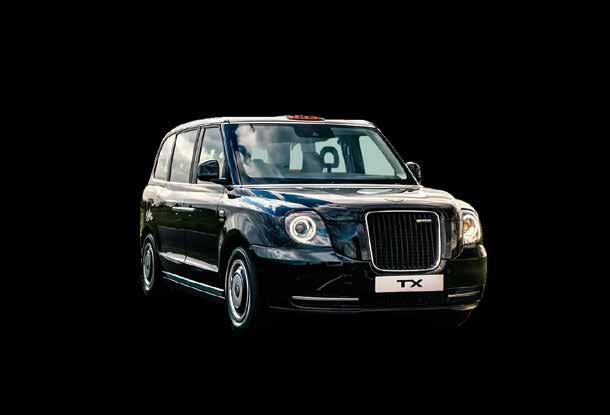

The number of taxi drivers renewing their licences in Glasgow has plummeted since Covid-19 restrictions eased last year.
Data from STV News reveals that no private hire licences were renewed in the past two years, while hackney renewals dropped by 44%
According to the data, obtained by a Freedom of Information request, just one new private hire licence renewal was granted in 2020 as drivers sought work elsewhere during lockdown, including jobs as delivery drivers. No licences were renewed in the whole of 2021 or the first six months of 2022.
The number of new applications for a private hire license has also fallen by two thirds. In 2019 a total of 267
new applications were made, but this dropped to three applications in 2020 and 14 in 2021.
Black cabs also suffered during the pandemic, with the number of people applying to renew their Glasgow Taxi
license dropping by 44%. In 2019, a total of 708 drivers were granted renewals, but this dropped to just 393 in 2020, rising to 532 in 2021. Just 19 new licenses were issued in 2019 which dropped to 13 in 2022.
All applications that were due to expire during the lockdown restrictions, between March and September 2020, were a given a sixmonth extension.
As of June this year there were a total number of 1,831 black cab and 3,301 private hire drivers licenced in the city.
The drop in numbers comes as more than 1,000 Glasgow hackney drivers have been told they must upgrade their cabs to greener vehicles in preparation for the launch of the Glasgow low emission zone (LEZ)in June 2023.
Only around 420 hackney taxis are currently compliant with the city’s LEZ standards, and the council’s demand is likely to result in a further drop in driver numbers.
Plans to reintroduce a seven-year age limit on private hire cars in Glasgow have been postponed. The rule was suspended during the Covid-19 pandemic, but drivers say ongoing problems mean it should not be brought back.
The private hire drivers warn that hundreds of could be forced off the road if the seven-year age limit is reimposed.
Following representations from trade bodies, the council agreed to postpone the decision until the drivers’ views had been properly heard.
Eddie Grice of the Scottish Private Hire Association, told councillors the reintroduction of the age limit would “negatively impact” drivers’ finances, and would have public safety implications if drivers were
forced to work longer hours to make ends meet.
He added that the increased cost of newer cars and delays in supply meant many drivers would not be able to comply. He said: “Private hire drivers are facing a cost-of-living crisis. We are dealing with a cost-of-
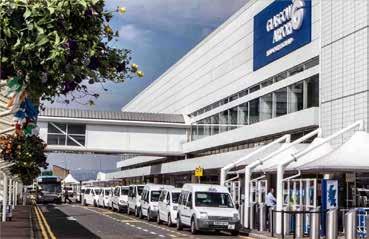
fuel crisis. We are experiencing ever-increasing vehicle purchase prices.”
“All this coming as we are still in the mode of rebuilding from the negative effects of the pandemic. Reintroducing a seven-year age limit will have a profoundly negative
effect on private hire drivers.”
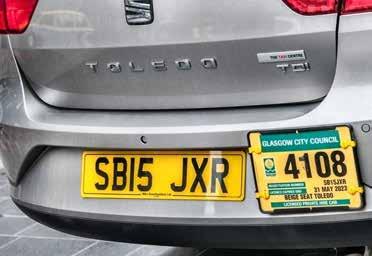
The policy, introduced in 2006, states a vehicle must not be more than five years old when first registered with the council and, at seven years old, vehicles must be “taken out of service and replaced”. But some drivers have called for the age limit to be lifted to at least 10 years.
Cllr Alex Wilson, the licensing committee chairman, said: “I think it is only fair that they have a proper chance to provide representation to the committee so we can discuss that at length.”
Grice said the postponement was a “class act” by the council.
“This isn’t just a stay of execution for the many drivers and vehicle owners that this policy will negatively affect,” he said. “It is also a huge win for democracy and for workforce organising.”
A date has yet to be set for the future hearing.
Cambridge taxi drivers say they could take legal action against plans for mandatory in-car CCTV.
Cambridge city council is demanding all taxis and private hire vehicles should be fitted with CCTV from April 1 next year. The council said it would not grant licences unless drivers complied, citing the need for improved passenger and driver safety as the reason for the decision.

Ahmed Karaahmed, the chairman of Cambridge City Licensed Taxis, said the city council was creating an extra expense for drivers when they were already struggling. He said he was considering taking the council to court over the move.
He said: “The taxi trade is trying to recover from long lasting Covid until now, with no profit. Next year will be another challenging year for our business, and winter will be tough. Cambridge City Council is creating an extra expense for the taxi trade.”
He said other authorities that had
implemented similar policies had paid for the cameras. He also argued that not being able to turn off the cameras when the taxi was being driven for private use was a “privacy risk”.
The authority had planned to require all taxis to have CCTV by April 2022, but this was delayed as an approved supplier for the cameras could not be found during the Covid-19 pandemic.

But drivers now say that while they support the safety aims, they cannot afford the cost to buy and install them.
In a report presented to the city council’s licensing committee, the estimated costs for a single-camera system to be £75-100, and £100-125 for a two-camera system. A singlecamera system and panic button is estimated to cost £320, and to cost £500 for a two-camera
system with two panic buttons.
While regular taxis are expected to only need one camera, an eight-seater MPV could require four cameras.
One wheelchair-accessible taxi driver told councillors that he could not afford the cameras and feared the city would lose more accessible vehicles due to the increased cost. He said: “April is way too early to bring CCTV in. As a driver I cannot afford it and that will put a question mark on will I continue doing my job, or will I just move on and try to do something else.”
Cllr Iva Divkovic asked council officers if they had looked into the possibility of the city council subsidising the cost. Officers explained that if the city council did subsidise the money would have to come from the general fund and would therefore need to be a budget bid for it.
They added that they would look into it, but “would not hold up much hope” that internal funding could be found.
People in the Belgian capital Brussels can now book traditional taxis through the Uber app. The move follows the Brussels Parliament’s approval of the controversial Taxi Plan in June.
Uber is launching Uber Taxi, a new feature which integrates the taxis into Uber, with all taxis now being available to book through the Uber app. The move is similar to the Local Cab app in the UK, and follows a similar taxi initiative in Barcelona, Spain, which has been running for several years. The company aims to make taxis available on its app everywhere by 2025.
Brussels’ Taxi Plan was designed to give equal regulations for both Uber drivers and traditional taxi
drivers, minimum rates for rides and the enforcement of quotas. Following the approval of the plan, Uber has decided to open its app to all the local taxi drivers.
“With the new Uber Taxi feature, more drivers will have access to the flexible earning opportunities that the Uber app offers,” said Laurent
Slits, head of Uber Belgium.
“Uber’s matching technology allows drivers to spend less time driving around looking for passengers or waiting at taxi ranks, allowing them to spend more time with a passenger in their car. It also allows them to offer their services to a new group
of customers, both local and international, that they may not be able to serve before,” he added.
Uber has had a controversial time in Brussels since the app first launched there in 2014. The company was even temporarily banned from operating in Brussels at the end of last year.

Our judging panel has spent the past week going through all the entries for the Professional Driver QSi Awards with a fine-tooth comb. And we’re delighted to reveal the final selection for all categories. Are you a winner? The only way to find out who has won Gold, Silver or Bronze is to book your place at the Professional Driver QSi Awards dinner at the Celtic Manor Resort on Tuesday, November 29, when we’ll announce the winners. Our black tie dinner is the industry’s favourite party and networking opportunity, and we’ll also be revealing the winners of Professional Driver’s 2022 Car of the Year Awards on the night, so don’t miss out on a memorable evening. Please visit our website to reserve your place: https://www.prodrivermags.com/qsi-awards-home/buy-tickets/ Or alternatively call Paul Webb on 07807 133527
Private Hire Company of the Year
MET Chauffeur Ser vices, Erskine

NI Chauffeurs, Belfast
Oracle Chauffeur Ser vices, Dorking
Parkers Executive, Newcastle-upon-Tyne
Tower Cabs, Plymouth
Veezu, Newport
Chauffeur Company of the Year
Aura Jour neys, Newark
Luxstar, Newport
Chauffeur Company of the Year (11+ vehicles)
Belgraves of London, Sutton
Blacklane, Berlin
Chabé, London
iChauffeur, London
Orion Luxur y Services, London
Wheely, London
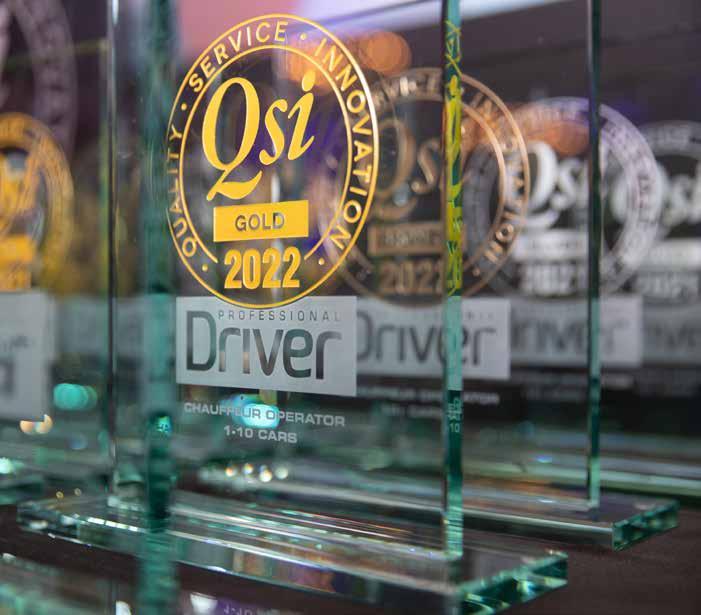






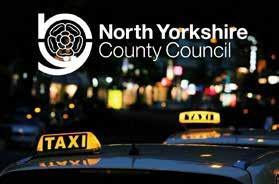 Mark Bursa
Mark Bursa
Plans to introduce a county-wide policy for licensing taxis and hackney carriages in North Yorkshire are being drawn up ahead of a major change in local democracy.
Members of the council’s decision-making executive will meet next week to decide to launch a consultation on the hackney carriage and private hire licensing policy for the whole county.
The existing seven borough and district councils currently have their own hackney carriage and private hire licensing policies. But ahead of the launch of the new North Yorkshire Council, which will deliver all local services from April 1, 2023, the county council’s executive will be asked to endorse a consultation for the new policy.
A comprehensive review of the seven existing policies has been undertaken and although they have several factors in common, there are differences in terms of applicant criteria, vehicle specification and procedures.
It is proposed that the new council will operate
one hackney carriage ‘zone’ for North Yorkshire. This will provide drivers with the flexibility to operate across the county, encouraging environmental efficiencies and creating a wider distribution of wheelchair-accessible vehicles. Councillor Derek Bastiman, executive member for open to business, said: “I would encourage anyone who drives or regularly uses taxis or private hire vehicles to take part in this consultation to help us shape the new hackney carriage and private hire licensing policy for North Yorkshire.”
He continued: “The policy plays an integral part in demonstrating the council’s commitment to ensuring that the public is provided with safe and accessible hackney carriages and private hire vehicles by the trade. And as a single local authority for North Yorkshire, it also ensures hackney carriage and private hire licence holders and taxi operators across the county are treated equally.”
The 12-week consultation will allow licence holders, taxi operators and the public to have the opportunity to share their views and help to shape the policy that will serve North Yorkshire Council.
There are no plans to impose hackney carriage quantity restrictions on the creation of a new single zone, and hackney carriage fares and fees will be reviewed at a later date.

If approved at the Tuesday, October 18 meeting, the consultation on the draft hackney carriage and private hire licensing policy for North Yorkshire will run from Tuesday, October 25, until Monday, January 16.
The Tyneside Clean Air Zone (CAZ) goes live in Newcastle and Gateshead on January 30, 2023 –and the cameras and signs are already in place. Cameras began monitoring vehicles entering the zone on 3 October to “help raise awareness and encourage people to get prepared for the CAZ”, according to Newcastle City Council and Gateshead Council.
Charging will be introduced in two phases –with non-compliant taxis, private hire vehicles, buses, coaches and HGVs being charged from 30 January 2023. Any vehicle that does not meet Euro 4 (petrol) or Euro 6 (diesel) emissions standards will have to pay to enter the zone. Non-compliant taxis and PHVs will have to pay £12.50 per vehicle, per day, payable via the national payment system that has been set up by the government.
Tyneside CAZ will also offer a local discount licence to non-compliant taxis and PHVs, which will cost £50 for a period of seven consecutive charging days.
Only vehicles that are registered with Newcastle, Gateshead or North Tyneside Councils will be eligible to apply for this discount. Non-compliant vehicles licenced outside any these three authorities will not be
able to apply for the discount and will need to pay the regular £12.50 charge.
Vans and light goods vehicles will not face charges until July 2023 to allow extra time for vehicle replacements, which are currently affected by a national supply shortage. Private cars, motorbikes and low emission vehicles will not have to pay the charge.
In total, 43 signs and 38 cameras are located at entry points around the boundary of the CAZ. Additional signage is in place on approaching routes and inside the zone while electronic signs on key routes are displaying alerts to inform people that charging will start in January 2023, said the councils.
The CAZ will cover most of Newcastle city centre as well as routes over the Tyne, Swing, High Level and Redheugh bridges.
Jane Byrne, cabinet member for connected city at Newcastle City Council, said: “Although the signage and cameras for the Clean Air Zone are now in place, we want to reassure people that there will be no charges until next year. Over the next two months we will be collecting details of vehicles entering the zone and contacting owners of non-compliant higher polluting vehicles to make them aware and provide information about how to get support and financial help.”
“We know that van drivers are finding it more difficult to replace vehicles at the moment due to national supply issues and therefore we are delaying charges for those vehicles to give those individuals and businesses more time to prepare.”
John McElroy, cabinet member for the environment and transport at Gateshead Council, said: “Affected drivers will be able to get support, including applying for financial help towards upgrading a vehicle, so we’re encouraging people to check if they are compliant and get in touch to find out about the support available.”
Kia UK has cut dealer service rates for fleet and business users in a bid to attract customers back to the dealer network for servicing work.
The new Kia Business Service Promise allows any Kia qualifying fleet car to benefit from manufacturer servicing at a highly competitive national hourly business-labour rate of just £49 plus VAT. Business customers also receive a 10% discount on parts prices, MOTs priced at £35, and a free vehicle health check on every visit.
There is no subscription, and the ‘Promise’ is open to any qualifying Kia fleet customer at any of Kia’s 192 UK dealers.
The move is part of the ‘Kia Business Service Promise’, designed to keep fleet and business customers mobile, as well as improving the residual value of cars through having a Kia dealer service and repair history.
Additionally, the ‘Promise’ has a no quibble policy to keep fleets mobile, in the event that a car is taken off the road for a warranty issue. Kia will assist with putting a driver in a like-for-like vehicle where possible or offer support with existing hire car costs to ensure continuity of job-need vehicles, although there are no plans to offer licensed replacement
UK-Spanish technology start-up Iomob is launching a seamless mobility platform before the end of 2022. It will allow travellers to book and pay for a door-to-door journey involving multiple modes of transport.
Iomob - short for Internet of Mobility – has spent more than three years developing the technology. The new platform can be integrated into existing transport and mobility websites and apps all over the world, allowing providers for the first time, to include third-party mobility connections, with a focus on sustainable options.
vehicles for taxi or private hire users.
Kia has been one of the strongest brands in the UK market in 2022, sitting third overall and at number one in the fleet sector, with 60% of all sales this year going to business customers.
Kia had a UK fleet market share of 8.8% year-to-date, by the end of September, with fleet sales just short of 50,000 units sold (49,866). Kia is on course to sell more than 100,000 cars in the UK this year, the first time it has hit the six-figure milestone.

John Hargreaves, Kia UK general manager for fleet and remarketing (pictured), said Kia had been successful as it had kept a presence in all parts of the fleet sector, including daily rental, motability and the taxi sector. “We’ve sold around 2,000 e-Niros this year to taxi and private hire users,
so it’s an important market for us,” he said.
Many of the cars have been supplied to drivers looking to go electric via intermediaries such as Ottocar, Splend and WeFlex. Hargreaves said Kia also had its own dedicated programme for Uber drivers, which allowed them to access an EV fund created by the ride-hailing company.
Kia has not been so badly constrained in supply terms as Korean manufacturers have been less badly hit by the shortage of microprocessors. Much of Kia’s supply comes from Korean suppliers such as LG and Samsung rather than Japanese or US suppliers that have lost production through various issues – including factory fires and a Japanese tsunami.
Hargreaves said the lower servicing costs were designed to address the perception that dealers were too expensive. “Fleets traditionally miss out on all the benefits associated with main dealer servicing, because there is a fear that they’re more expensive or that they’re mainly focused on retail customers,” he said.
Kia is fast progressing towards achieving one in every two cars sold being an electrified (plug-in hybrid, hybrid or electric) model. In 2022, 17% of sales have been battery-electric EV6, Niro or Soul models.
Lime, Dott, Nextbike, Spin, Beryl, Parkimeter, Karhoo, Santander Cycles, Superpedestrian, Smartzi, Cab9, HOPR, Carzac, Via and Gig Car Share.
“All over the world, people are the victims of disjointed journeys through a failure to link transport networks and modes of transport, which results in a negative passenger experience and unsurprisingly, many private car trips,” said Adrian Ulisse, Iomob UK managing director.

“Iomob’s disruptor technology is designed to “supercharge” existing transport and mobility apps around the world, providing greater access to sustainable travel options and
for the first time, a seamless travel experience for people everywhere.”
The Iomob platform is a constantly growing, all-access pass to currently more than 7,000 taxi fleets, 10,000 car parks, 1,800 public transit feeds and micro-mobility in more than 270 cities.
Iomob is currently building partnerships across the travel sector in the UK, United States and Europe. The company has already integrated with Bolt, CMAC, VOI, Hub Parking, Tier, Q Park, Human Forest,
Ulisse added: “With a focus on sustainability and carbon reduction, Iomob enables passengers the ability to discover, plan, book, pay and fulfil any mode of mobility, anywhere, including taxis, ridehailing, parking, bikes, e-scooters, car share and rental. Our clients can provide better value and experiences which are both better for their customers and better for the planet.”
An announcement about the first major UK transport operator customer to launch Iomob on its app and website will be made by the end of the year.
—Mark BursaPlymouth taxi drivers have slammed the local council for offering them an “insulting” £200 grant to repaint their cabs green and white (pictured).
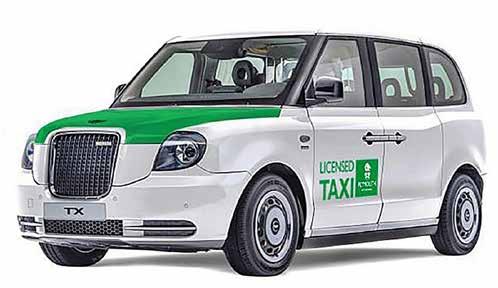
Hackney drivers say the money will only cover 10% of the average bill for repainting or wrapping black cabs, which will have to be done by 2027.
Martin Leaves, secretary of the Plymouth Licensed Taxi Association (PLTA) said: “They are offering £200 but a lot of taxi drivers are saying that is an insult. We have had quotes for up to £2,000.”
In April, Plymouth City Council approved the Hackney Carriage and Private Hire Licensing Policy 2022, which ordered black cabs to adopt a green-and-white livery in order to “improve the visibility of cabs and reassure passengers that they are travelling in a licensed vehicle”.
But Leaves told local reporters he had recently paid £70,000 for an electric vehicle and didn’t want to pay any more to change
Blackpool council has rejected a proposal to allow private hire vehicles in the seaside town to display advertising.
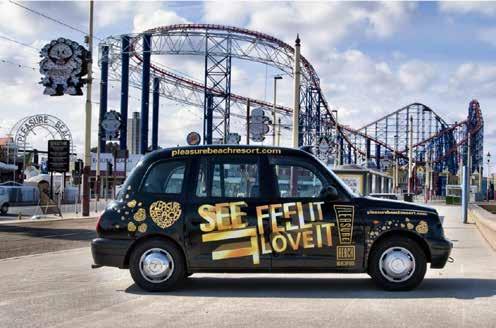
Cllr Tony Williams, leader of the Conservative opposition group, had asked the council to consider the move to boost revenue for drivers. But the motion was lost by one vote after the Labour group voted against it.
Currently only hackney taxis are allowed to display adverts. Bill Lewtas, secretary of the Blackpool Licensed Taxi Operators Association (BLTOA), said the council’s decision was the right one, as the move would have made it harder for passengers to tell taxis and PHVs apart.
Lewtas said: “Private hire vehicles are by law
its colour. He said: “I’m not prepared to get it sprayed green and white because of the uncertain economic climate.”
PLTA has proposed that Plymouth cabs should simply carry the city coat of arms on the front doors, which would only require an inexpensive graphic
to be applied to each vehicle.
Plymouth City Council defended the move. A spokesperson said the £200 was an award, not a loan, and added: “The council provides more than 300 different services and allocates its resources to provide the best outcomes for the citizens of the city.”
not allowed to look like taxis, not allowed to put the word taxi on the vehicle and not allowed a roof sign. If this had been allowed private hire vehicles would have looked even more like taxis. In Blackpool it is already difficult for people to recognise the difference.”
Cllr Williams had argued drivers were facing financial challenges including rising fuel costs. He said both PHV and hackney drivers should be allowed to increase their revenue streams and promote local businesses through vehicle adverts.
Ford’s controversial decision to end production of the Fiesta supermini in favour of new electric SUVs made the headlines – but buried in the announcement was the news that a favourite in the private hire sector was also for the chop.
The Ford Galaxy – for many years the backbone of Addison Lee’s fleet –will cease production next April, along with its family-oriented sibling, the S-Max.

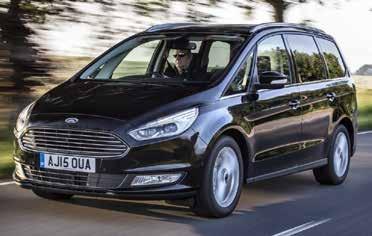
Both models have been immensely popular with operators all over the UK. Addison Lee is estimated to have bought around 10,000 Galaxys over a 20-year period, and many former Addison Lee Galaxys often found a second life with other operators after Addison Lee sold them on.
But after Volkswagen ended production of the Galaxy’s chief rival, the VW Sharan/Seat Alhambra in 2020, the Galaxy was the last large car-derived MPV still available. The only other genuine car-derived MPV, the Citroen Grand C4 Space Tourer,
also ceased production this year, leaving only van-based people-movers on the market.
In a statement, Ford said: “We are accelerating our efforts to go all-in on electrification with our passenger vehicles being fully electric by 2030 – and all vehicles across our Ford portfolio by 2035. As we get ready to transition to an electric future, we will discontinue production of S-Max and Galaxy in Valencia, Spain in April 2023 and discontinue Fiesta production in Cologne,
Denbighshire’s licensing committee has launched a consultation into allowing older taxi vehicles to continue to be used, so long as they meet strict maintenance checks.
At a licensing committee meeting this week, councillors were asked to consider raising the existing maximum age for both new and renewal applications of hackney carriage and private hire vehicles.
Since 2017, all new-to-fleet vehicles must be no more than five years old and any vehicle reaching 12 years old must be replaced or removed. A five-year period of grace was given for already-licensed vehicles which had “grandfather rights”. This grace period ended in July 2022, but was extended for a further year until July 2023.
But councillors questioned whether the age of vehicles was important if they were properly maintained. Cllr Martyn Hogg said if a vehicle was well maintained, it should still be safe to be in use.
“It could have done 500,000 miles, but if it’s been well maintained, it could be, or should be, better than a car that’s done 50,000 miles but has never had a service,” he said. “Has there ever been a serious incident because of a car’s age?”
Cllr Bobby Feeley added: “Cars are so much better than they
Germany by end of June 2023.”
Ford plans to introduce three new electric passenger vehicles and four new electric commercial vehicles in Europe by 2024. These will be developed jointly with Volkswagen as part of a wide-ranging cooperation agreement between the two companies. This has already seen joint development of the Ford Transit/ Tourneo Connect and VW Caddy models.
Ford’s statement continued: “We plan to sell more than 600,000 electric
vehicles in Europe by 2026, and electric passenger vehicle production at the Cologne Electrification Centre will reach 1.2 million vehicles over a six-year timeframe.”
The Galaxy was launched in June 1995 as part of an earlier JV in Portugal between Ford and VW. The initial Galaxy, Sharan and Alhambra MPVs were essentially badgeengineered “triplets”.
After Ford exited that venture in 2006, it developed an all-new Galaxy, built on Mondeo running gear in Belgium, alongside the lower and shorter S-Max. A third-generation version was launched in 2015, with production moving to Spain and this finally gained a hybrid powertrain in 2019. Since late 2021, this petrolelectric powertrain has been the only powertrain available.
Ford’s decision earlier in the year to axe the Mondeo meant the Galaxy and S-Max were on borrowed time. With consumers appearing top prefer SUVs to MPVs, the taxi sector now has no option but to choose van-based seven-seaters.
were many years ago, aren’t they? Mechanics are good, and, they can go on for many miles now if they are maintained and looked after thoroughly, so whether or not we do need to look at it.”
The committee decided to defer the time limit on ‘grandfather rights’ for a further 12 months until July 2024. The committee also authorised officers to instigate a consultation process, looking at increasing the maximum age of taxis in use from 12 years and instead introducing a strict maintenance regime.
The consultation will also look at allowing new taxi vehicles to be introduced to the county’s fleet if they are under eight years old. A decision will be taken in December.







Westminster City Council is installing 500 more charging points by March 2023, making the council the bestequipped EV charging area in the UK.
The move comes after the council received a large amount of external funding from central government to supply more resident charging points, with a further 500 on-street chargers to be installed throughout the rest of 2023, doubling the number available to more than 2,000.
However, analysts fear moves such as this are creating a twospeed adoption of charge points, with regions outside London in danger of being left behind. According to EV charger locator app Zap Map, Greater London currently has a whopping 31.7% of the UK’s charging points.
By contrast, government figures from July show that Northern Ireland has the least amount of publicly available charge points, with just 17
per every 100,000 people, with northwest England next-lowest at 27.
Insurance company Zurich UK believes this regional divide is having an impact on small businesses, slowing down their ability to switch to electric vehicles.
Zurich’s research claims there is just one public charge point available for every 56 SMEs. The situation is worse in some areas, for example
Greater Manchester, where there is only one charger for every 237 small firms.
Essex was found to have the next lowest amount of chargers, with 203 firms competing for each charger, followed by Surrey at 169.
Will Edwards, Zurich’s head of SME, said: “SMEs have a huge and vital role to play in helping the UK reach the Government’s net zero
carbon emissions target by 2050. With lower running costs and exemption from many charges that apply to combustion-engine vehicles, switching to an electric fleet should be an easy decision for SMEs. However, the shortage of charge points in many UK regions and counties could prevent SMEs from making the leap.”
He added: “Furthermore, regional disparities in access to charging infrastructure may hinder the ability of small firms to do business, or their desire to invest, in some parts of the UK. We need to see a levelling-up of public charging infrastructure, so all businesses, irrespective of where they are located, can benefit from the EV revolution and also meet sustainability targets.”
The government’s Local EV Infrastructure (LEVI) pilot scheme is seeking to change this. So far, nine councils, including Dorset and Warrington, are set to receive funding to install 1,000 charge points each.

Addison Lee has signed an agreement with charge point operator BP Pulse that will give drivers of electric vehicles access to 3,000 ultra-fast and rapid charge points.
The move is expected to help the London private hire, courier, and black taxi provider, to accelerate its fleet electrification programme. Addison Lee already has 450 Volkswagen ID.4s operating across London, and it has pledged to have more than 1,000 in service by the end of 2023.
The agreement includes access for Addison Lee drivers to BP Pulse’s EV Fleet charging hubs on Park Lane and at Gatwick airport. The Park Lane hub has 22 50kW rapid charge points, providing fast, reliable charging in a convenient location for

private hire drivers.
The Gatwick hub has 6 ultrafast charge points (150kW) and 8 50kW rapid charge points, serving airport users, taxi drivers, local businesses with electric vehicle fleets, and local residents.
BP Pulse UK CEO Akira Kirton said: “We’re delighted to be supporting Addison Lee in its
transition to an all-electric fleet. Relationships like this, together with our plans to open several more fleet charging hubs across the City and Greater London, will facilitate more electric journeys and help accelerate the electric transformation of fleets.”
Addison Lee CEO Liam Griffin said: “Access to charging infrastructure continues to be
the number one challenge for drivers switching to electric vehicles. Signing up with BP Pulse provides Addison Lee partner drivers with access to its expanding charging network in London, allowing us to continue leading in the transition to zero tailpipe emissions vehicles.”
Last month Addison Lee also reported that it completed its four millionth EV mile, which has removed 1,000,000kg of CO2 from the city’s streets.
BP pulse is expanding its global network of highspeed charging for cars, light commercial vehicles, and trucks, with a global ambition of more than 100,000 charge points by 2030, with approximately 90% of those rapid or ultra-fast. In the UK, the company has announced plans to invest up to £1 billion into the country’s EV charging infrastructure.
 Mark Bursa
Mark Bursa
Octopus Energy Generation, one of Europe’s largest renewable energy investors, has allocated up to £110 million in funding to grow Manchester-based public EV charging network Be.EV across the UK.
The deal will help grow Be.EV’s public charge point network sixfold from 150 chargers at present by a further 1,000 charge points across the North of England and beyond by 2024. Octopus Energy already supplies all of Be.EV chargers with 100% green electricity.
Data shows that public EV charge points are currently unevenly distributed in the UK, skewed towards London. Octopus’ backing means Be.EV, which already operates Greater Manchester’s largest public EV charging network,
can address this imbalance.
Be.EV’s business model builds concentrated, communitybased charging networks where they’re most needed to ensure more equitable access to public chargers and instil confidence in going electric.
Matt Setchell, co-head of Octopus Energy Generation’s fund management team: “Our first foray into funding EV charging infrastructure is a significant
milestone. As a nation, we need to rapidly build more EV charge points to meet the growing number of drivers going electric.”
Department for Transport Electric Vehicle charging device statistics from January 2022 show how London has the highest level of charging provision per 100,000 of population, at 102. For comparison, the north-west has just 24 for every 100,000 people.
Asif Ghafoor, CEO and co-
founder of Be.EV, said: “People who live outside London or in less affluent areas are underserved by public EV charging. If you live in a flat or terrace, you can’t charge at home. This investment addresses that imbalance and helps kickstart a national infrastructure effort that, for once, doesn’t start in London.”
He continued: “We have sites lined up and underway that will form dense clusters of chargers that give people the confidence to go electric. We’re also building infrastructure that communities can be proud of, reinventing charging locations as green neighbourhood hubs and developing iconic designs. Octopus’ support means we can take this unique approach to other parts of the country, addressing the imbalance in charging provision across north and south, urban and rural communities.”
Taxi Scheme is offering drivers the chance to drive away a brand-new hybrid or electric vehicle at a fraction of the retail price – simply by signing up to the scheme.
For a subscription of just £5 per month you gain guaranteed entry to Taxi Scheme’s monthly car giveaway competitions. You must be a UK licensed hackney or private hire driver to be a member of the scheme.
So for just £1.25 a week you could be driving a new hybrid or electric car – and that could be one of the following:
u BMW 5-series Hybrid
u Lexus ES300h Hybrid
u Mercedes E-Class Hybrid
u Mercedes V-Class
u Tesla Model 3

u Toyota Corolla Hybrid.
u LEVC TX Electric Taxi

There’s a special draw ever y month, and one lucky Taxi Scheme member will win a car.
To sign up for Taxi Scheme, either email info@ taxischeme.co.uk for more information or visit www. taxischeme.co.uk

MAY BE gaining traction in the mainstream private hire market, but for executive chauffeurs, the wait seems to be somewhat longer. CONTINUED ON NEXT PAGE

continued from previous page
The Mercedes-Benz EQS is with us, but its reception has been somewhat lukewarm within the market. A beautiful and brilliant car to drive, but its low roof and hatchback boot have led to doubts as to its capability as a top-level chauffeur car.
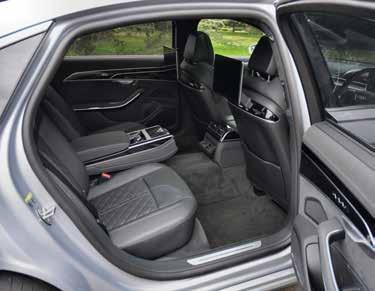

BMW’s i7 is undoubtedly on the money, but it’s still a few months away – so for the time being, chauffeurs looking to replace tired diesel limousines are still having to look at plug-in hybrids.
The dominant car over the past few years has undoubtedly been BMW’s 745Le, whose only drawback is a lack of petrol range due to the restricted fuel tank. But the inconvenience of having to fill up every day is not the imposition that dealing with the still-unreliable EV charging network presents.
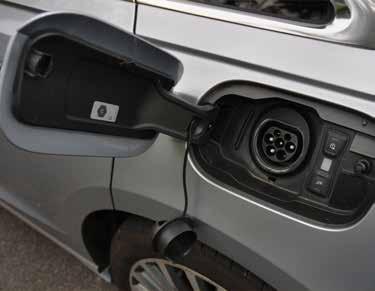
Mercedes-Benz returned to the PHEV fray with the S580eL, another technological tour de force, though at an eye-watering six-figure price.
But this is not a two-way fight. There is a third player, though its presence has been somewhat lower in the past few years. Yes, Audi is still here, despite a combination of “dieselgate” and microchip supplier issues that has hit the Volkswagen group company perhaps harder than any automaker.
The A8 has been with us for nearly 30 years now – the brilliant original car was launched in the spring of 1994, and today’s versions are direct descendents, carrying on the strong but light aluminium body that was the defining feature of the original. The current fourth-generation A8 was launched in the UK at the start of 2018. It was a substantially bigger car compared to the 2010 version it replaced. The launch range comprised 3.0-litre diesel and petrol engines, as well as a 4.2-litre V8 diesel and a 6.0-litre W12 petrol model. But since a mid-life facelift last year, all that remains is a ULEZ-compliant PHEV, called the A8L TFSI e, which we are testing here.
The A8 L TFSI e combines a 3.0-litre V6 petrol engine with an electric motor. It offers a purely electric range of up to 36 miles, and switchable modes allow you to engage fully electric EV mode in cities of clean air zones. Hybrid mode runs electric and petrol drivetrains automatically to suit conditions, while Charge mode allows you to top up the battery when driving with the V6 engine. The battery can be easily charged at up to 7.4kW via a home wall box or at a public charging station –there is no rapid charge facility as the car is not a pure EV.
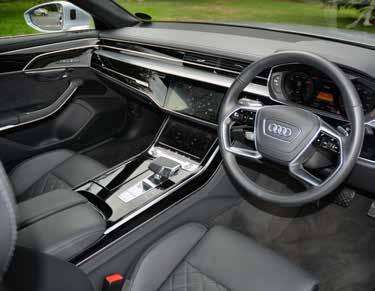
The facelift gave new exterior details, especially a new grille, but other than detail changes, the interior is as per the 2018 version. The dashboard is almost completely digital, with three separate panels. A central 10.1in satnav screen is flushmounted with the dashboard, and when the system is off, the screen disappears completely.
Navigation and maps can also be displayed on the digital dash panel. A third touch screen serves as heater control and input device, allowing handwriting input, including whole words to be written with a fingertip. Unlike Mercedes and BMW rivals, there is no physical input device.
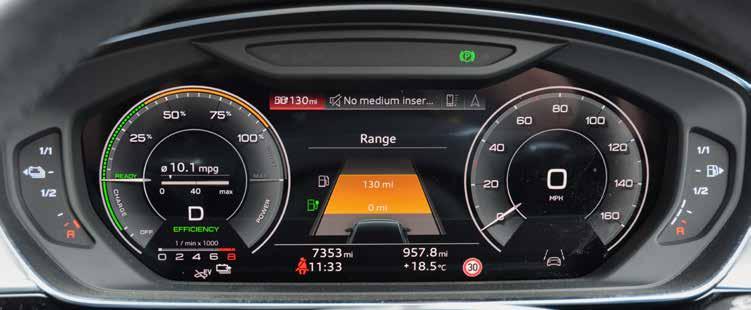
The rear seats gained a significant upgrade in 2018, with 32mm more legroom than the old LWB version, and top-line versions of the A8L matched the S-Class and 7-Series by making the nearside rear seat an optional relaxation seat that comes with four different adjustment options and a footrest. Luggage space is reduced, as always, by the battery pack and electric equipment, and the A8L offers just 390 litres rather than 505 litres on the now-withdrawn petrol and diesel models.
Typically for a large PHEV saloon, the luggage space is even more compromised by the presence of large bags containing charging cables. Our test cases fitted, but there wasn’t room for much more. Its two main rivals share the same issue, which could be problematic.
On the road, the A8 feels big and impressive. Road manners are improved by the addition of dynamic all-wheel steering, which turns the rear wheels either in or against the direction of steering depending on speed.
All A8s include a high degree of autonomous driving capability. Adaptive cruise control is wellworked, and clearly the hands-off steering works well on motorway contraflows – providing you keep a light grip on the wheel when prompted.
The price is significantly higher than the 2018 price of the diesel versions, which weighed in at just over £73,000. The A8L TSFI e costs £91,790 for Sport trim – still more than £10,000 cheaper
than the Mercedes S580eL, however. S-Line adds a further £5,000 (£96,790) and there’s a topline Vorsprung edition that tops the range at a staggering £115,290.
Audi has simplified the pricing structure –gone are the days of customisable build – supply dictates demand these days. The Tour Pack comes as standard on all A8s. This includes adaptive cruise control and active lane assist, a head-up display and other safety features including turn assist, swerve assist and camera-based traffic sign recognition. Beyond that, there are three add-on packs.
These include a Comfort and Sound Pack at £2,125, offering a parking assist package, a Bang & Olufsen 3D Sound System and multi-coloured ambient interior lighting.
Perhaps of more use to chauffeurs is the £3,000 Rear Comfort Pack, offering screens in the rear, a three-passenger rear seat system with two electrically adjustable seats, rear footrests, fourway pneumatic lumbar supports for the front seats and the outer rear seats, and matrix LED reading lights.
The £1,475 City Assist Pack is a worthwhile addon too, with Front Cross Traffic Assist that warns
the driver of cross traffic approaching the vehicle at intersections with poor visibility and in exit roads, and Lane Change Assist providing warnings when joining motorways or changing lanes, or even when reversing out of parking spaces.
Adding those packs to the Sport trim A8L TFSI e takes the price up to above £98,000 – and that’s without adding niceties such as a panoramic roof or extended leather trim. Gone are the days of the £60,000 chauffeur car!
The Audi satnav system hasn’t changed much in the past four years – what you get on the A8L is pretty much the same as you find on the e-tron family of electric Audis. It also supports Apple Car Play and Android Auto, if you fancy a simpler style of display than Audi’s Google Maps-sourced graphics.
The ‘haptic’ screens require a forcible push rather than just the brush of a fingertip – and they let you know you’ve pushed hard enough by vibrating. Takes a bit of getting used to, and we’ve said it before – a discreet entry module is much better as it allows the hand to be still when entering data on the move, and all those fingerprints look awful on the screen when the sunlight catches them.
It remains unclear whether the audi a8 will live to celebrate its 30th birthday as the flagship of the Audi range. And it’s even less clear if there will be a successor – a fifth-generation all-electric version, which would be most welcome in the chauffeur market. It would be a shame if the current fad for all things SUV-shaped were to kill off the big saloon – especially when there’s still plenty of demand for a three-box luxury cruiser. BMW certainly believes the market still exists – hence i7. And Mercedes is adamant that the current S-Class won’t be the last, so you can expect an electric replacement before the end of the decade at least. But Audi seems a shadow of the company it once was. Desperately short of cars, and prioritising its EVs over its ICE legacy range. So driving the A8 already feels rather like something from a different era, rather than a car that was only revealed five years ago. Having said that, it’s a highly competent, brilliant motorway car that offers better petrol range than the BMW 745Le. Fuel economy more or less matches the departed diesel A8L we tested on launch – that offered 35.7mpg against 34.0mpg for the PHEV. Your main problem may be finding one – supplies are short, and lead times are long as a result. But it does everything its rivals can do, in some cases better. Keep it on your shopping list, as you never know when supplies will turn up!
Adecade or so ago, when Mg was starting to re-establish itself in the UK, it launched a new car at a Butlin’s holiday camp. Cheap and cheerful was the message, but the feeling was of a brand looking for a direction.
Ten years on, much has changed. The MG brand still has a price advantage over most others thanks to its Chinese manufacturing – it’s owned by China’s biggest automaker, SAIC. But the hunt for a direction seems to be over.
MG is rapidly establishing itself as a leading player in the electric car market – few volume manufacturers can boast three EVs in their range (the MG4 has recently joined the MG5 and the ZS EV), and nobody else has an electric estate car like the MG5.
With prices starting at £30,995, the MG5 has already become a firm favourite among private hire operators. It’s the ideal replacement for a hybrid estate such as a Toyota Corolla for operators looking to up the green fleet content from hybrid to EV. And it’s proving popular with ride-hailing drivers – suppliers such as WeFlex and Splend have ordered large numbers of the cars since it first arrived here three years ago. Indeed, SMMT figures show the MG5 sitting at number 5 in the UK car sales league table for September 2022.
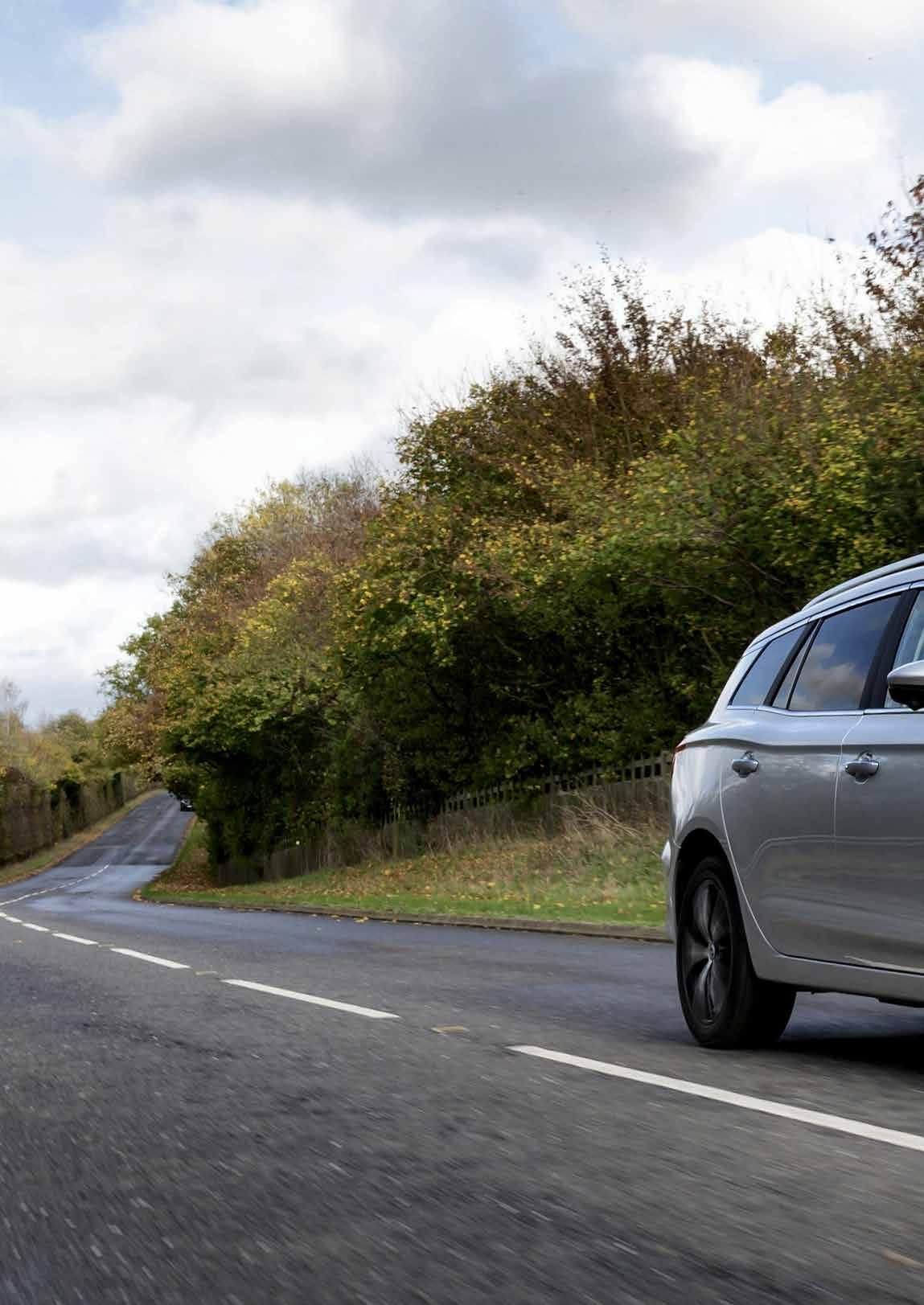
Now the MG5 has received a substantial facelift, with a new look and an upgrade in fit and finish inside and out. Mechanically nothing has changed, but better systems and a smart exterior upgrade has made the car even more appealing. “Given the changes that have been made to it, you could argue that it’s a brand-new car,” says MG UK sales director Geraint Isaac.
The MG5 EV’s electric powertrain initially offered just over 200 miles of range on a full charge, but it was upgraded last year to give 250 miles in general use, rising to more than 300 miles in city use. For an urban taxi or private hire user, that means a couple of days’ stress-free running in between charges. “We are seeing more and more MG5s in use as taxis, and not just in London,” Isaac says. Indeed, MG has sold 11,000 5s so far – including several thousand to PH and taxi operators.
One key advantage over rivals from the likes of Kia and Volkswagen is the fact that the MG5 is a conventional estate, rather than an SUV. So many EVs are SUV-shaped because the taller stance allows battery packs to be stashed under the floor. On the MG5, the water-cooled battery pack is integrated into the car’s chassis, giving it an extremely low centre of gravity, and
allowing a car-like stance.
There has been a small price rise of around £1,500 – even low-cost Chinese manufacturing is not immune from the supply pressures that are currently besetting the automotive industry. So now the MG5 SE costs £30,995, still substantially cheaper than mainstream rivals. The Kia Niro EV we tested last month costs £39,590, while the VW ID.3 we tested earlier in the year tops £43,000. A £12,000 per car saving is not to be sneezed at, and the residual value is likely to rise too.
Two specifications are available at launch - the MG5 EV SE and the MG5 EV Trophy. Trophy costs £33,495 thanks to higher spec, though the cars are the same under the skin. Both feature MG’s 61kWh Long Range battery as standard, capable of up to 250 miles (SE) or 235 miles on the more up-market Trophy on the WLTP cycle. The 61kWh battery is also capable of recharging at up to 87kW, meaning a charge time of only 35 minutes from 10-80% using a 150kW DC rapid charger. There’s a fully transferrable 7-year/80,000-mile warranty with every car, though it’s unlikely that a private hire user will get to seven years before hitting 80,000 miles!
The good news is that MG is likely to keep the supply pipeline flowing as it attempts to rebuild a presence in the UK. There are delays in securing supplies of the ZS EV at the moment, admits Geraint Isaac, but the MG5 is not constrained, and neither is the MG4, a little smaller than the 5 but no less roomy in the rear than, say, a Kona EV. “We’ve been told that we’re getting good supplies of MG5 and MG4 in 2023,” he said. MG’s business plan for this year is to sell 6,000 MG5s, and between 10-15,000 MG4s – though the order bank for the MG4 is already at 20,000, so the pipeline might have to be increased. There are 10,000 ZS EVs on order too, so Isaac hopes the supply issues on the compact SUV can be resolved more quickly than the 12 months currently being quoted by the factory.
MG has also recently come to an agreement with BP Pulse regarding the use of its charging network, which should mean a discounted rate for MG customers. The deal has just been signed off, and details will be announced in the near future.
Low build costs in China mean a low sales price –
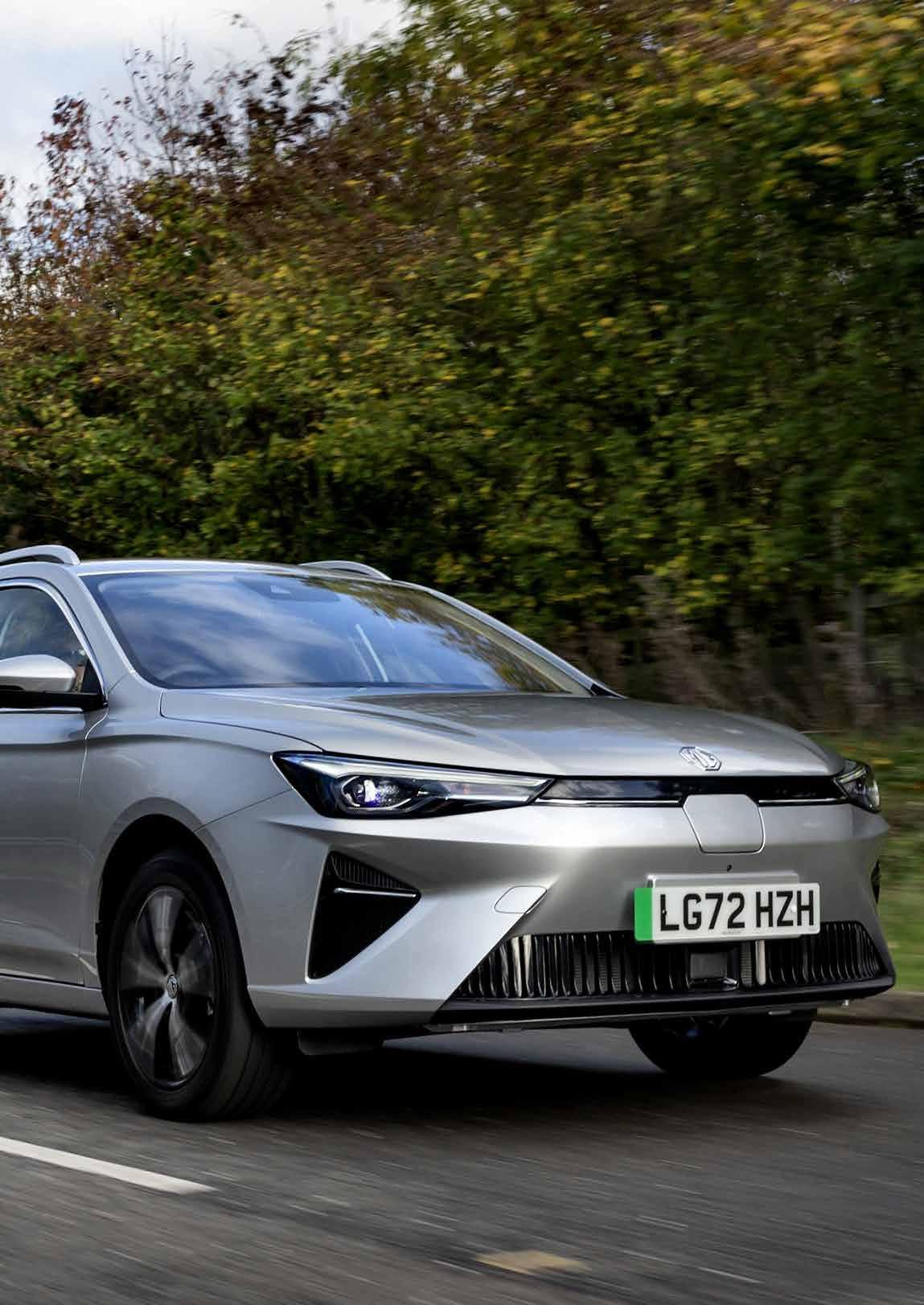
but that doesn’t mean a drop in quality. Far from it – the facelifted MG5 feels extremely well built too, with good quality plastics inside and tight panel gaps outside. It certainly doesn’t give the air of a budget car. Seats are comfortable and supportive and the driving position is good. The controls are simple – a rotary gearshift is mounted on the redesigned centre console – rotate left for reverse, right for drive and push the centre for park.
There are two buttons above the transmission selector which you need to use. One selects the three drive modes – Sport, Normal and Eco. Normal is the default, but switching to Eco gives a range boost – so it should be an automatic action once you start the car. The other button sets the level of braking regeneration – there are three levels, and the switch toggles through them. To maximise range, set the regen to 3 – it means you’ll decelerate more quickly, but as you do this, you’ll see on the dashboard that you’re recuperating energy and bolstering your range even further. And you’ll not need to brake so much – strong regen means less brake wear, reducing brake dust particulate emissions and lengthening the intervals between new sets of brake pads.
The MG5 has plenty of power, like all EVs, but range maximisation is king, and a light foot on the throttle
is necessary if you’re going to hit the “official” range figure. Likewise, it’s better to stick to 65mph on the motorway, as you’ll get a markedly better range than if you drive at 70mph. An easy-to-use cruise control, operated by a separate stalk on the steering column, makes it easy to keep speeds under control. Remember, the flat torque curve of an EV means that if you put your foot down, it accelerates, whatever speed it’s doing.

The most noticeable change is to the front end of the car, where the false grille of the earlier version has been replaced by a slimmer, sharper nose with new LED headlights and a central EV charge socket. From the front, the MG5 now looks like an EV! Inside, there’s a new 10.25in central satnav screen and a 7in digital dashboard. The system is new, and much easier to use – though there’s the option of Apple Car Play or Android Auto if you prefer.
The estate car body means square rear doors, so getting in and out of the rear is easy. Rear seat passengers have ample head room and plenty of legroom, even when seated behind a tall driver. The large boot - the car’s true USP - is accessed from a wide tailgate opening. With the rear seats up and load cover in place there are 464 litres of boot space, or with the load cover retracted that extends to 578 litres with the rear seats still in place.
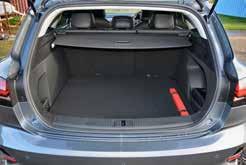
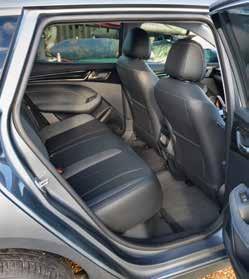
Standard specification is high: MG5 comes with 16in alloy wheels (17in on trophy trim), a six-speaker 3D audio system, DAB radio, 4 USB ports, electric windows all-round, air conditioning, regenerative braking, cruise control with speed limiter, an auto-hold electric parking brake, rain-sensing wipers and push-button starter. Cloth trim is standard with the SE; leather on Trophy. Trophy specification also includes 360-degree parking camera, heated front seats, auto air conditioning, electrically folding heated door mirrors, rear privacy glass and an auto-dimming rear view mirror.

Safety systems are now included in a standard package called MG Pilot. This comprises active emergency braking with pedestrian and bicycle detection; adaptive cruise control with traffic jam assist; intelligent speed limit assist; lane-keep assist with lane departure warning system and intelligent high-beam assist.
G HAS CERTAINLY HIT THE SWEET SPOT FOR THE ELECTRIC CAR SECTOR, and for the taxi market, it’s refreshing to have an estate car rather than yet another SUV-crossover. The improved MG5 doesn’t add more range – the 250 miles it can travel in general use is the limit for the design, it seems. But a 300-mile urban range means the MG5 should be well up to the task for a city taxi. It’ll charge quickly on a modern rapid charger – we added 100 miles in half an hour on one of Ionity’s charge points when we tested the pre-facelift model in 2021, and the charging technology is exactly the same on the new versions.
Build quality is surprisingly good, and the level of comfort for both driver and passengers is excellent. Compared to obvious rivals such as Toyota Corolla Tourer or Skoda Octavia estate, the MG5 doesn’t feel out of place. And remember – neither of those has an EV option. Compared to other volume battery-electric cars such as Nissan Leaf or Hyundai Kona, the MG5 offers more loadspace, roughly the same range – but crucially, for a price in the region of £10,000 lower. And that’s where the MG really rams home its advantage – and changes the game.
Iseem to be doing a lot of motorway miles in the Mazda6 these days. That’s no bad thing as this car is well equipped to be a motorway cruiser.
It’s very quiet at 70mph, and with adaptive cruise control and good supportive driver seat it lets you eat up the miles without too much fuss. The last days before the clocks plunged us into winter evening gloom saw me take my annual pilgrimage to Leeds to spend a couple of days –and a round of golf – with long-term friend and MD of Ethos Finance Chris Brown.
A nice long journey for my often-overlooked Mazda to undertake. My reward for five hours on the road was a comfortable night in the lovely Rudding Park Hotel – all in the name of research for a future event, of course.

As I get more accustomed to the Mazda 6 I’m becoming accustomed to the satisfying lowkey feel to the interior. Calling it minimalist would probably be taking it too far. The cabin is not dominated by a big screen or swathes of buttons. Instead, the air conditioning controls are housed in a slim panel of buttons right in the centre, while control of the infotainment system
is handled by a sensible rotary controller on the centre console.
These features means there are few distractions for the driver, which is always
a good thing. You can keep your eyes on the road while changing the station or adding a destination – no need to jab and poke at a touch screen.
I may have have mentioned this before – but I’m a major fan of the head-up display. The HUD comes into its own, especially on motorways, and it’s a driver aid that I find it hard to do without From a quick glance at your speed to sat nav information it really helps you to stay concentrated on the road.
This I needed on my return journey as after 9.00pm the highways agency decided to close all main routes north to south, so I was diverted on to routes and places I have never been before. So now I was relying on the information that the constant re-routing nav was giving me.
I understand the need to repair motorways and main a roads but a little coordination wouldn’t go amiss so that at least one major route could remain open, rather than 40-50 cars weaving around country lanes looking as bewildered as I was.
Despite all this angst the car’s easy feel kept me calm, and after a seven-hour slog I said thanks and let the red workhorse have its well earned rest.
hy would I take your work when I haven’t got enough drivers to do my own?”
This is a comment I occasionally hear at industry trade shows from operators, and it got me thinking, why is there a distinction between whose customer the passenger is?
What I think the operator is saying is that customers who come via aggregation channels, for example Jyrney, CMAC, Gett and Karhoo (apologies to those I have missed!) are not viewed in the same way as passengers who book directly on the operator’s app, by phone or via a direct corporate account.
Daniel Price CEO and founder of Jyrney
Why is this? Our industry is still suffering from a shortage of drivers. Travel has returned ahead of the drivers and many operators are still down on numbers. The distinction on booking channel, where direct bookings are prioritised ahead of aggregator bookings, protects the operator’s direct clients, where there are long term relationships and loyalty in place.
This demonstrates that for some operators the aggregated bookings hold less value, regardless of the actual price of those bookings.
This isn’t always the case. At Jyrney we have spent the past two years building a network of local operators that hold the bookings we send in high regard.
Other industries have seen the model of aggregation that is growing in our trade emerge earlier. Back in the mid-’90s, in the early days of the internet, hotel bookings were done largely in 2 ways, either booked directly with the hotel or through a travel agent.
The giant online travel agencies (OTAs) such as Booking.com and Expedia were still to become fully established as major channels for hotel bookings.
Once online booking increased, OTAs become a more important channel for the hotels. Many travellers wanted to book all of their travel in one place, and they wanted the ability to book a flight and hotel together.
But due to its fragmented nature, and the requirement for more advanced technology than that of the hotel world, ground transport has not been integrated into the OTAs.
Today OTAs make up, depending on market, around 35% of all hotel bookings, and are seen as an important booking channel for the hotels. The OTAs help them fill the quieter shoulder periods, where they have more empty rooms, or help them access customers they might not have been able to reach such as international holiday makers or business travellers who could only use hotels available via certain channels.
For the private hire and taxi operator, the relationship
with the aggregator needn’t be one of conflict with direct bookings; but a channel to complement them. A relationship with an aggregator can be used to grow the business of an operator, accepting jobs during quieter periods, declining them when too busy.
By their very nature the aggregator requires as many operators in their network as possible, so if one operator cannot do a job, another can be found. Working together in this way, to ensure that private hire operators undertake the booking, helps secure the place of the operator in the wider travel and transport market.
Ground transport aggregation is filling a similar role for the taxi and private hire operator as the hotel OTA. The work that aggregators are asked to cover for their customers is varied. For Jyrney they include airport pickups for business travellers, return trips for a car repair, on-demand rides for mobility partnerships and demandresponsive trips for students at local universities.
The passengers being transported may or may not live in the town or city where the operator is located; the car service station where they are collected from may be local to the city; or they are being taken home from a long flight.
For these bookings they cannot use the operator directly. Often the company making the booking needs national, or international coverage. They want to use multiple operators on a single booking platform, with a single invoice.
The passenger might even be a local operator’s customer, they may still have the app and make use of it to take their kids to school in the morning, book a taxi to the shops or bring them home after a night out. Taking the booking via the aggregator gives the operator another channel to win the customer, to ensure that the car the passenger travel in always has their logo on the side.
The alternative is less attractive. Without an aggregator winning these clients, be they a transport provider, a travel management company or automotive business, and sending the bookings to the local operator, the work will go elsewhere.
If our industry’s aggregators cannot get the work covered, or worse still, cannot win these contracts in the first place, then the global ride-hail companies will sweep in for these contracts.
And in that scenario, we all lose the booking. So, whose passenger is it anyway?
n Daniel Price is CEO and founder of Jyrney. Daniel.price@jyrney.com — www.jyrney.com
John f. kennedy once noted that when written in Chinese, the word ‘crisis’ is composed of two characters, one representing danger – the other opportunity.
Despite the lack of linguistic accuracy, the sentiment is true: a crisis brings a choice, especially now. The bullish predictions for a strong post-Covid economic rebound in 2022 didn’t turn out well, as economies around the world have stagnated. This has caused the highest inflation in decades, and when combined with low growth this causes a phenomenon known as ‘stagflation’.
In times of crisis, commitment to innovation and focus on growth tends to decrease as companies choose to focus instead on short-term survival, building on core competencies, exploring known opportunity spaces, conserving cash, and minimising risk.
Scrafton Founder and COO of The Connect Consultancyto differentiate and take systemic action to reimagine market boundaries. It is those few that make the hay, while the sun doesn’t shine.
An example of successful innovation during Covid was diversifying from delivering people to include goods during lockdowns – global companies that actively embrace disruption, such as Uber, whose Uber Eats delivery platform is now more profitable than the original Uber platform.
An equation Mckinsey used with value problems to solve during a crisis was this:
Value of potential opportunity = (Number of target customers x Frequency that the solution is used x Willingness to pay for the current solution) ÷ Level of satisfaction with currently available alternatives.
These are all admirable contingencies for survival, but what of the opportunities that a crisis may bring – especially if they are presented with the ability to not only survive but to thrive?
In June 2020, soon after the pandemic hit, global consultancy McKinsey published a report stressing the need to prioritise innovation during a crisis to unlock growth opportunities.
McKinsey also reported that three out of four executives agreed that innovation within their business would be critical to recovery. But alarmingly, only one in five felt equipped, confident, or prepared to pursue opportunities to capture new growth.
The same McKinsey report also provided facts collated during the previous economic crash of 2008 suggesting that companies that invested in innovation outperformed their market by more than 30% during recovery.
Despite the supporting evidence, prioritising innovation strategy is still largely dismissed during economic downturns as contrarian, with many equating it to something of a wild card. With the economic downturn and inflated fuel and energy costs, industry stakeholders might feel you can’t afford to take risks, gamble, or even deliberate on whether to ‘stick’ with ICE or when to ‘twist’ to electric!
Many may feel this play is based on random intuition alone. And here lies the crux of the problem. By applying strategy, systems, insight and experience, innovation is not done on a whim, it is done to minimise risk.
By being wedded to conventional, welltrodden paths, ‘the many’ continue to compete with each other on a similar level for diminishing returns, leaving uncontested market space for ‘the few’ that realise the opportunities and crucially are prepared
Can you overlay this in your business or bring your unique sector experience to identify opportunities within relative reach?
Taking this equation as a starting point and applying it to e-mobility, we can look at those businesses in the trade for whom EV charging-asa-service presents a credible opportunity.
They would include industry stakeholders who have land and parking for example and therefore are in pole position to differentiate themselves from the crowd and in doing so create new uncontested and hyper-valuable market space.
Let’s use Mckinsey’s equation to look at this as an opportunity in a crisis.
APPLYING THE EQUATION:
The value of the opportunity is equal to the ‘number of target customers’ (ie EV drivers) that need to be increased. This is done by providing them with reliable, ultra-rapid and easily accessible charging using energy that’s affordably resold to them.
This in turn would create multiple daily users, increasing the ‘frequency that the solution is used’, who then would be more than ‘willing to pay’ because the solution would be far superior to the currently available alternatives. Thus it would increase the level of satisfaction and future demand growth. That’s the sort of scenario most business development managers can often only ever dream about.
The Connect Consultancy, like most businesses, uses compelling taglines. One we use is ‘EVolve with us’. Beyond the obvious play on words, in the face of crises such as those businesses are experiencing today, companies have to evolve in order not just to survive –but to thrive.
n Tim Scrafton runs the Connect Consultancy, providing end-to-end strategy, insight, supply of EVs, chargers and installations. hello@ theconnectconsultancy.com

“With the economic downturn and inflated fuel and energy costs, industry stakeholders might feel you can’t afford to take risks, gamble, or even deliberate on whether to ‘stick’ with ICE or when to ‘twist’ to electric!…”
The move from autumnal colours to bare trees, frost and dark mornings and nights is a sure sign that this year is ebbing away. A few busy weeks, some over eating, over drinking and over spending and that is that!
And when we look back at 2022 what a year it has been. The sad death of our wonderful Queen, more prime ministers and chancellors than we can shake a stick at, taxes cut one week and put up the next, plans to spend like a drunk sailor replaced with cuts and austerity and energy costs and interest rates moving inexorably higher.
And in our industry, massive VAT confusion in London, driver supply shorter than ever, new cars rarer than hens’ teeth and no one breaking any records. It may not be our worst year but it was certainly a long way from being our best.
Dr Michael Galvin https://mobility serviceslimited .com
So, as is traditional at this time of year before we tire of mince pies, cold turkey and pickles, how do we imagine next year is going to pan out?
Well as I write this piece there appears less certainty than ever. Having had three Transport Secretaries in a little over a month there is not much to be gleaned from Horseferry Road. So, what are the certainties? There is good evidence in my view that the reducing driver numbers experienced of late will continue, as the resource pool that most drivers come from remains in high demand.
I suspect that over this three-year licensing cycle numbers will regress back to the normal 200,000 or so that there was before ride hailing arrived – the evidence for this is already clear. New regulations, new overheads and long waiting times in some areas for licences are taking their toll.
New cars will no doubt at some point start to roll out of the factories again and when you order one the dealer might be able to give you at least a tentative delivery date. However, before that the transition from ICE to EV may yet get more painful as OEMs cease making the old and tool up for the new.
I’ll avoid the issue of the lack of a decent charging infrastructure as it is getting boring.
So, what about VAT? It’s coming up to a year in London since the Divisional Court made its ruling/clarification and yet no one really seems very clear on what it means, what is allowed and what everyone should be doing.
Wasn’t the empire built on good administration? Where did it all go wrong? This industry follows a great many rules but if the rules are unclear, left “up to you to take your own advice” or frankly opaque, how does anyone expect the industry to
react? What will the consequences be if some of the ‘experts’ are wrong?
And now the exercise is being repeated outside of London – if the finding is different, and it may well be, it is a different set of legislation. Where does that leave things? The old saying of “if it ain’t broke, don’t fix it” certainly comes to mind.
Layer on a recession, continued working from home and whatever the chancellor(s) comes up with in their next fiscal event and we can see a year ahead that is a bumpy road to say the least.
So, what will the year ahead bring that is positive? As a natural optimist, even I am struggling to see the green shoots let alone the sunny uplands. I believe the one bright spot may be fares.
Unless fares continue to move upwards apace the driver shortage will become even more serious. Inflation may be the thing that puts a stop to ridiculously low fares and instead puts the industry back where drivers can get decent rates and make sensible money and businesses can reinvest real money again.
That would be no bad thing. In parallel I suspect that the mayhem of recent years will continue to subside, businesses that can be sold will be sold as struggling along alone trying to maintain the status quo has a limited lifecycle. Those that cannot be sold will amalgamate with their near neighbours or close down and we will quickly grow used to a smaller, more profitable and better paid industry.
The threat of changes to legislation will I believe dissipate as the DfT spends its time trying to stop strikes, extricate itself from paying for the railways and decides what it should be doing about HS2 and the other money sucking projects it has inherited.
Stricter employment laws seem unnecessary in a time of recession as every job is valuable and there is going to be little appetite for such moves if drivers are earning more per fare than they have for the last decade. Then by the end of 2023… bingo! We are into the next election when nothing happens save people trying to save their skins (or seats).
As the end of the year approaches, I’m sorry to end on a low but short of a magic wand I am not seeing how the economy and in concert the industry is going to suddenly burst into a boiling fountain of good news in the current environment. Tin hats on... there’s a tough year ahead!
n www.mobilityserviceslimited.com
“New cars will no doubt at some point start to roll out of the factories again and when you order one the dealer might be able to give you at least a tentative delivery date. However, before that the transition from ICE to EV may yet get more painful as OEMs cease making the old and tool up for the new...”
This seems to be the season for U turns. I was going to go into more detail about the VAT on fares issues, but now I have received the first bit of information regarding Uber’s VAT settlement. So, I am going to take a broader look at what is going on, and what I think may happen in the future.
VAT seems to be on everyone’s radar again, as is TfL’s need for clarity on operator contracts and the obligations relating to the Uber v TFL V App Drivers Union case. As I write, the shadow of the Sefton versus Uber case looms. As I have said many times, this is all fluid and yet to be decided. I will explain more later on.
Gary Jacobs runs Eazitax, an accountancy firm specialising in the taxi and private hire business eazitax.co.uk

Uber is paying HMRC £615 million to settle all outstanding VAT claims, but the sum is much lower than the £1.5bn the tax authority had reportedly raised in VAT assessments.
Uber confirmed recently that it had resolved the HMRC VAT claims, and that it was paying HMRC the sum during its fourth quarter to resolve the outstanding VAT claims. The announcement came as Uber announced that globally gross bookings grew 26% to $29.1 billion and revenue increased by 72% to $8.3bn.
This issue is not new and has been in dispute for some years now, and even though the ride-hailing app seems to be a magnet for controversy, this is an age-old fight that we have had with HMRC on the movement of money through operators’ books.
HMRC wanted Uber to charge the standard rate of VAT for gross bookings not on the admin fee (what we would call circuit rent or commission) that the company charges drivers.
Previously, Uber accounted for VAT with the driver providing the service to the customer. This is rather than as a principal transport provider, which is roughly the principal and agent position for VAT that everyone is talking about now.
Uber previously claimed it should only pay VAT on the commission it receives from the driver, as the company had seen its role as the agent, which left the VAT burden on the fares shifted to its drivers. However, most drivers were earning below the £85,000 VAT registration threshold, and were therefore not obliged to charge VAT.
There are two things to take from this. Firstly, it was made clear by Jolyon Maugham QC of the Good Law Project, who said the figure Uber paid was considerably “less than HMRC was asking for”, adding: “There are some very serious
unanswered questions about why HMRC appears to have settled the dispute with Uber for such a low sum.”
Secondly, the existing case was turned on its head when, following the High Court ruling against Uber in December 2021, wherein it was ruled that Uber was the principal service provider, not the driver. HMRC then pushed for retrospective VAT payments. Although I still dispute the validity of the ruling to refer to VAT, Uber itself decided to impose VAT on its service following this ruling, from March 2022. And so there it is.
I have already stated (alongside industry doyen Steve Wright of the LPHCA) that if we continue as a trade to shout about VAT, it will become a selffulfilling prophecy by drawing the hungry gaze of the tax man to our door. And lo and behold, thanks to Steve, who shared this entry in Hansard with me this week: “Daniel Zeichner MP raised this oral question regarding ‘Private Hire Operators: VAT’ in the House of Commons on 13th October 2022. The response from Lucy Frazer MP, as Minister of State (DfT), was as follows (as found at https://hansard.parliament.uk/Commons/2022-10-13/ debates/45407707-AB36-48D6-A1F0-09B8F0590859/details):
“His Majesty’s Revenue and Customs is considering any implications that that may have on VAT payable by private hire vehicle operators. As he will know, the Government always keep all taxes under review. I am sure that the Minister responsible for this area, Baroness Vere in the other place, (House of Lords) will be happy to meet him.”
Is this definitely going to mean VAT on fares? No. Remember, the contracts for Uber and many other ride-hailing apps are a long way from the models used by the ‘average operator’.
Do we have to panic? Maybe, as the eyes of the legislators and the tax man are now firmly on us. What I will leave you with is this:
Our trade needs people to use our service, however if the entire country as one adopted VAT on private and public hire fares, the poor public would foot the bill, not the operators or the drivers. Paying VAT means you become a tax collector for the government, collecting their tax and passing it on.
VAT money should not be relevant to a company’s actual profitability. It just hurts a little for consumers who cannot claim it back. I will, of course, keep you all posted as this develops.
Along, long, long time ago, i drove for a large London-based minicab company and came across a wide variety of persons working in the profession. Those were happy days but that’s another story.
This company allowed their drivers to work as long as they wished or for as few hours as the driver wanted. There were fixed costs in working for this company, such as rent, insurance, vehicle hire, car tax, and so on. So, some drivers drove as few hours as possible, so they could spend time with their children; or for other reasons; others used their spare time to write the Great British Novel, while others drove all hours possible.
Then there was David. David was about 30 years old. He was at the other end of the work spectrum, working at least 12 hours a day, seven days a week. I was amazed. I was working a 10-hour day, six days a week. I was young and strong but still found the hours I did a little bit daunting.
“Dave, what the hell are you doing? You’re going to kill yourself. What about the danger of falling asleep. You could kill your passengers”, I remonstrated.
“Don’t worry”, he replied “I was in the military and know the techniques for self assessing my awareness. I keep healthy through diet and exercise. I am doing this because I’ve just bought a house and want to pay off the mortgage in three years.”
I believed that Dave’s diet and exercise explanation worked and that he did pay off his mortgage. However, I have always thought about the effects that the overwork of those in this profession has on a driver’s mental and physical health as well as the danger posed to passengers and third parties by such long hours.
Recently, when working for one of the new app-based companies I saw the same things I had seen all those years ago. However, these organisations, although “new and shiny”, were not as flexible as the company I worked for all those years ago.
Many drivers are working long hours in an unsafe working environment. These hours are unfeasible and could lead to physical and mental illness.
In addition to the potential danger of this to the professional driver the Royal Society for the Prevention of Accidents states: “Driving is the most dangerous work activity...it contributes to far more work-related, accidental deaths and serious injuries than all other work activities. In fact, most of those killed on workrelated journeys are passengers, pedestrians and riders rather than the at-work, drivers and riders.” I have not been able to find the figures related to professional private hire drivers.
A summary of the current regime covering the personal health of professional private-hire drivers includes:
A requirement by licensing authorities that applicants for private hire licences obtain a “fitness to drive” certificate from their GP. With such certificates being renewed regularly, renewal increasing in frequency after the driver reaches a certain age.
The Medical Standards of Fitness to Drive is compiled by the DVLA in consultation with medical and other professionals, covering a range of conditions such as colds and flu, hay fever, allergies, deteriorating eyesight, migraine headaches, stress,
back pain, neck stiffness or lower/upper limb problems (known as musculo-skeletal problems), diabetes, physical health issues, epilepsy, multiple sclerosis, heart conditions, and so on.
Also, drivers are legally required to tell the DVLA if they develop a ‘notifiable’ medical condition or disability, such as one or more of the above, or a condition or disability that has worsened since they obtained their licence.
When a GP has a private hire driver patient with a condition or is undertaking treatment that could impair their fitness to drive, they have a legal duty to inform the DVLA.
These provisions are good but are as effective as calling the fire brigade once your house has burnt to a crisp. They will not capture what happens between medical examinations or reports to the DVLA.
What I am proposing is that the law is amended to bring drivers within the current professional driving hours framework. These currently entail that a professional driver must not drive more than 9 hours in a day, extended to 10 hours twice a week; alternatively 56 hours in a week or 90 hours in any 2 consecutive weeks. Under these regulations there are complex rules on breaks and rest periods.
“Well Kwabena,” I can hear readers saying, “as a trade unionist should you not be finding ways of increasing the earnings of your members instead of preventing them from working?”
My role as a GMB rep is to increase the earnings of our members, within the shortest period of time worked. The current situation is linear, in that to earn more our members and other professional drivers have to work longer to earn more. My O-level economics taught me that if a supply of professional drivers is reduced, the cost of those services goes up. But my argument is not a mechanism to increase earnings but rather a concern about safety.
Some would argue that what’s proposed cannot be policed as a number of private-hire drivers work for two or more companies. This issue appears to have been dealt with under the current regulations, where agency and other drivers work as heavy goods or passenger drivers. The mechanism for monitoring driver hours can be app-based, with companies required to supply, on demand, details of their drivers’ hours to their licencing bodies.
Would David appreciate what these changes will do to his earnings? Don’t know, probably not. But I believe that passengers, other drivers or pedestrians who are not injured by an accident caused by a tired private hire driver would appreciate such changes.
—Kwabena Dennot Nyackn Dennot is an AGM trade union member and was a former representative of the GMB’s professional drivers. He is also an author and broadcaster with a strong knowledge of the private hire industry and an equality and diversity specialist. email: dennotnyack@yahoo.com mobile: +44 0740 625 276

The united kingdom is a group of islands off the coast of continental Europe. Today, this once Great Britain finds itself rudderless, leaderless and cast adrift from the respect and, I’ll say it without being proud of the fact, the fear we once exuded around this fragile planet.
This particular episode of the British sitcom called ‘Life’ can only be attributed to the feckless, spineless “leaders” who use Downing Street as an AirBnB when in London to collect their per diems. Blimey, even Italy appears politically stable compared to the UK and I have heard rumour that Venezuela is looking to organise a Live Aid concert for us.
Leaving the EU was sold to us as a new dawn, a fresh start free from the supposed constraints of an overly bureaucratic Brussels. As stated many times previously in this column I was not a fan of this momentous shift yet prepared to let the democratic voice be heard.
Doesn’t seem to have turned out that way, though. At a time when we were supposed to be chasing better trade deals, new opportunities and collaborations, we are wading through a treacle of incompetence and lies.
There comes a time in life when easy decisions need to be taken. Take a business we started some 10 years back called BePOB, a platform to job share empty runs within our industry which, for one reason or another, never quite got off the ground.
My wife and I took the decision to close the business as it just wasn’t working. While this was hard to accept it was a relatively easy decision to make because, no matter how much we believed in the concept, BePOB was failing to make any money or convince an industry it was necessary, so we simply stopped it.
The time has arrived for that same common sense logic to be applied to British politics (And Brexit – Ed). We tried a political system that is patently failing so a hard reset is called for. So, to kick us off here are my own, rather radical, serious or not suggestions to get us back on track:
No elections for 15 years. Instead, an appointed board of experts will be tasked with running the country. Initially comprising of, and open to discussion: Andy Burnham – CEO. Martin Lewis – economy. Jeremy Clarkson – transport (Agriculture these days, surely? – Ed). Jo Brand – elderly and social care. Prof Brian Cox – education Alan Sugar – business (You’re fired – Ed)… Board members to be paid £7 million per year to avoid ‘cronyism’ with their longevity of tenure based purely on results, not personality. This scheme will be funded by a super-tax on Premier League football clubs and players. After 15 years the people will be asked if they want to continue on with the new system or hold a General Election to decide which political party they trust (I know, I’m laughing as I write this).
The English, not the Scots, hold their own referendum on whether they want to remain within the United Kingdom. Should we vote ‘YES’ (to independence) then the name England will be defunct just as soon as we register ‘Britannia’ as a sovereign state within the United Nations.
Scotland wins independence by default, meaning Nicola Sturgeon’s SNP will be held accountable for the cost of holding our referendum because we paid for
theirs back in 2014. Paid in Pounds Sterling carrying pictures of the Monarch, not that ‘funny money’ Marks & Spencer refuses to take at any of its stores south of the border.
The trading situation is a mess, so instead of sorting it out, Britannia will invade the Isle of Man, which is not part of the EU or the former United Kingdom, and turn the whole island into a bonded warehouse. Goods in/goods out, Simple!
Immediate set up of The Protest Channel. A 24 hour TV and radio feed that enables anyone with a grievance, be that political, environmental or otherwise, to air their views, free of charge, to anyone who cares to listen. Any physical protests that disrupt the daily life of others are banned. A monthly audience between protesters and relevant ‘heads of department’ are also guaranteed.
The death of our beloved Queen has seen a raft of former colonised countries ‘get brave’ with talk of leaving the club and/or seeking independence.
Listen, Her Majesty protected the Commonwealth club so vehemently in order to help you lot out, not us. Please reclaim any of your treasures we stole, then hid, in the British Museum and be on your way. King Charles and immediate descendants to act as figureheads and ambassadors for Britannia with historic perks and privileges honoured.
All other members of the extended members of the royal family need to find a job. Buckingham Palace will be sold to Hampton by Hilton and a new National Anthem will derived from a reworked ‘Three Lions’.
Water, oil, gas, electricity and nuclear utilities to come back under control of the state. Britannia Board of Governors will offer no compensation to be paid to existing owners or shareholders as you’ve had a great run feeding off the fat of the land and have hopefully put some aside for a rainy day.
Well today is that day and it is chucking it down. All complaints opposing this should be aired on the Protest Channel at your convenience.
Well, it’s probably no worse than what we have. Right now, a tiny minority can force out the Prime Minister, and replace their chosen jester with another meat-puppet, and another if the chosen one turns out to be even more incompetent, ad infinitum.
Have we gone mad? Look, I don’t expect nurses to run the NHS but feel we should be asking them questions such as ‘what do you need?’ and ‘how can we fix this?’ Same goes for teachers, emergency services and indeed any public body you care to mention.
These guys are on frontline without a care for statistics or catchy soundbites. Their lives are being run by politicians in silk underwear who were previously sacked from another department for incompetence.
Thomas Jefferson once declared: “The government you get is the government you deserve.” He might be correct. But it’s hard to see what we’ve done to deserve this lot. Surely we deserve better?
n Kevin Willis runs Chirton Grange, contact@chirtongrange.co.uk – 07725467263

Through our iGo technology, we are working with Uber on the pilot of ‘Local Cab’connecting riders who use the Uber app directly with local taxi and private hire operators - helping generate incremental trips, creating additional revenue for your existing drivers and enabling recruitment of new drivers to handle the ever-increasing demand.
Lakeside Taxis
Starline Taxis A2B
McLeans Taxis McLeans Taxis Amber cars Hawk Express Jet Taxis
www.autocab.com 001 Taxis Andy Cars
Key Cars Need-A-Cab Apple Taxis